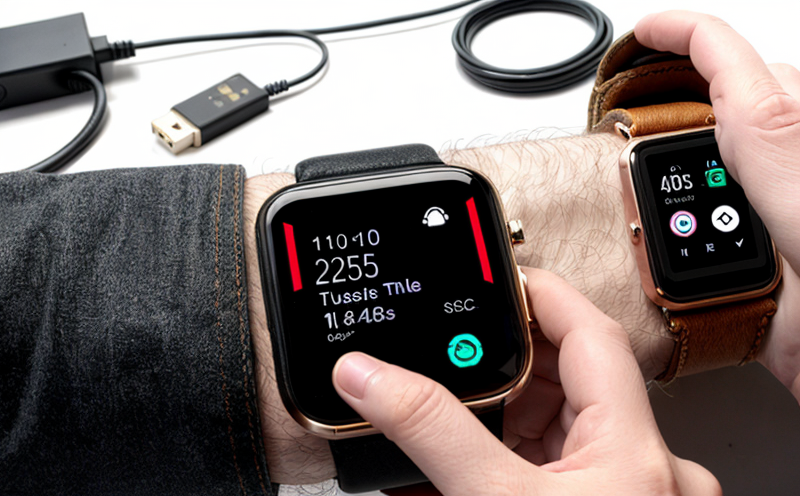EN 301 489 EMC Testing for Portable RF Devices
The European standard EN 301 489 is a critical document that sets out the Electromagnetic Compatibility (EMC) requirements for portable radio frequency devices. This standard ensures that electronic products comply with electromagnetic interference (EMI) and electromagnetic compatibility standards, which are essential to prevent harmful emissions from interfering with other devices in close proximity.
Portable RF devices, including smartphones, tablets, wearables, and wireless headphones, are subject to stringent testing under EN 301 489. This testing ensures that the devices do not emit excessive electromagnetic interference (EMI) or susceptibility to external interference, which could disrupt other electronic equipment in a user's environment.
The standard covers various aspects of EMC testing for portable RF devices, including:
- Electromagnetic emissions
- Radio frequency interference (RFI)
- Immunity to electromagnetic disturbances
Compliance with this standard is mandatory for the sale and distribution of portable RF devices within the European Economic Area (EEA). Non-compliance can result in product recalls, legal penalties, and damage to a company's reputation.
The testing process typically involves several stages. The first stage involves determining whether the device complies with the emission limits set out in the standard. This is followed by tests designed to evaluate the immunity of the device from external electromagnetic interference. If any issues are identified during these stages, further modifications may be necessary before retesting.
Compliance testing under EN 301 489 can be complex and time-consuming. It requires specialized equipment and expertise to ensure accurate results. Our laboratory is equipped with the latest technology and experienced personnel to help companies navigate this process successfully.
| Test Stage | Description |
|---|---|
| Emission Limits | Determines whether a device emits excessive electromagnetic interference that could affect other devices. |
| Immunity Testing | Tests the device's ability to function correctly in the presence of external electromagnetic interference. |
| Key Considerations for Compliance | Description |
|---|---|
| Equipment | The use of high-quality, calibrated equipment is essential to ensure accurate results. |
| Environmental Factors | Tests must be conducted under controlled environmental conditions to ensure consistent and reliable results. |
| Test Parameters | Detailed test parameters are specified in the standard, which include frequency ranges, measurement techniques, and acceptance criteria. |
The process of EMC testing for portable RF devices is crucial to ensure that products meet the necessary standards. By adhering to these regulations, manufacturers can protect their reputation, avoid legal issues, and provide consumers with reliable and interference-free devices.
Why It Matters
The importance of EMC testing cannot be overstated in today's interconnected world. Portable RF devices are integral components of modern communication systems, and any failure to meet the standards set out by EN 301 489 can have serious consequences. These include:
- Product recalls
- Lawsuits from affected users
- Loss of consumer trust and brand reputation
- Legal penalties for non-compliance
The standard aims to protect consumers by ensuring that portable RF devices do not interfere with other electronic equipment. This is especially important in environments where multiple devices are used simultaneously, such as offices, homes, and public spaces.
In addition to protecting consumers, compliance with EN 301 489 also has broader implications for society. It helps to reduce the risk of electromagnetic interference between different types of electronic equipment, which can lead to disruptions in critical infrastructure and services.
Customer Impact and Satisfaction
Ensuring compliance with EN 301 489 is directly linked to customer satisfaction. By meeting the standard's requirements, manufacturers demonstrate their commitment to quality and reliability. This can lead to increased customer trust and loyalty.
Customers are more likely to purchase products that have been tested and certified for EMC compliance. This not only enhances brand reputation but also reduces the risk of product returns and replacements due to non-compliance issues.
In addition, meeting the standard's requirements can help companies avoid costly legal disputes with affected parties. By ensuring that their products do not emit excessive electromagnetic interference or are susceptible to external interference, manufacturers can protect themselves from potential liabilities.
Use Cases and Application Examples
The following are some typical use cases for EN 301 489 EMC testing in portable RF devices:
- Smartphones
- Tablets
- Wearable technology (smartwatches, fitness trackers)
- Wireless headphones and earbuds
| Use Case | Description |
|---|---|
| Smartphones | Determine whether the device emits excessive electromagnetic interference that could affect other devices. |
| Tablets | Evaluate the immunity of the tablet to external electromagnetic interference. |
| Wearable Technology | Ensure that wearable devices do not interfere with other electronic equipment or are susceptible to external interference. |
| Wireless Headphones/Earbuds | Test the emission limits and immunity of wireless headphones/earbuds in compliance with EN 301 489. |
In addition to these, portable RF devices used in healthcare settings may also require specific testing under other standards. For example, medical-grade wireless devices should comply with IEC 60601-2-22 for electromagnetic compatibility and interference immunity.





